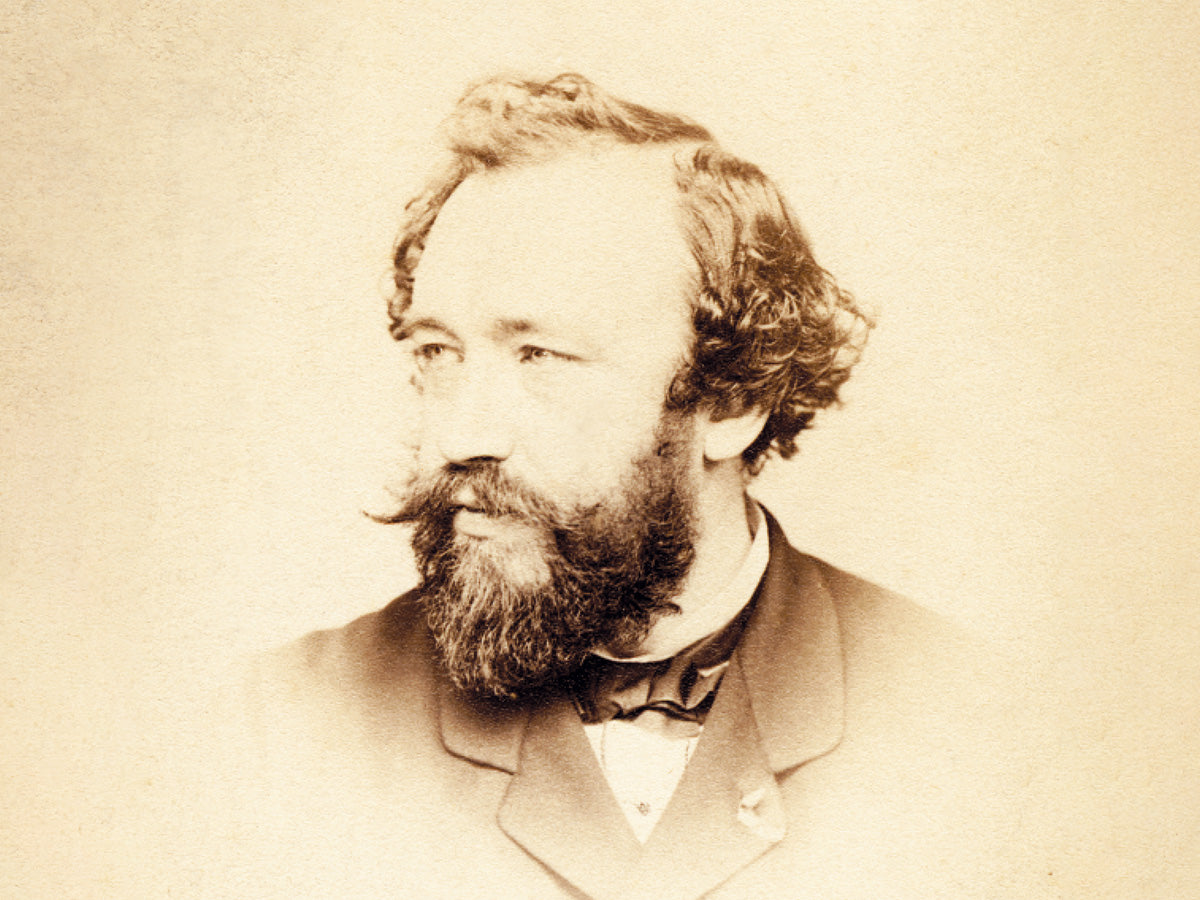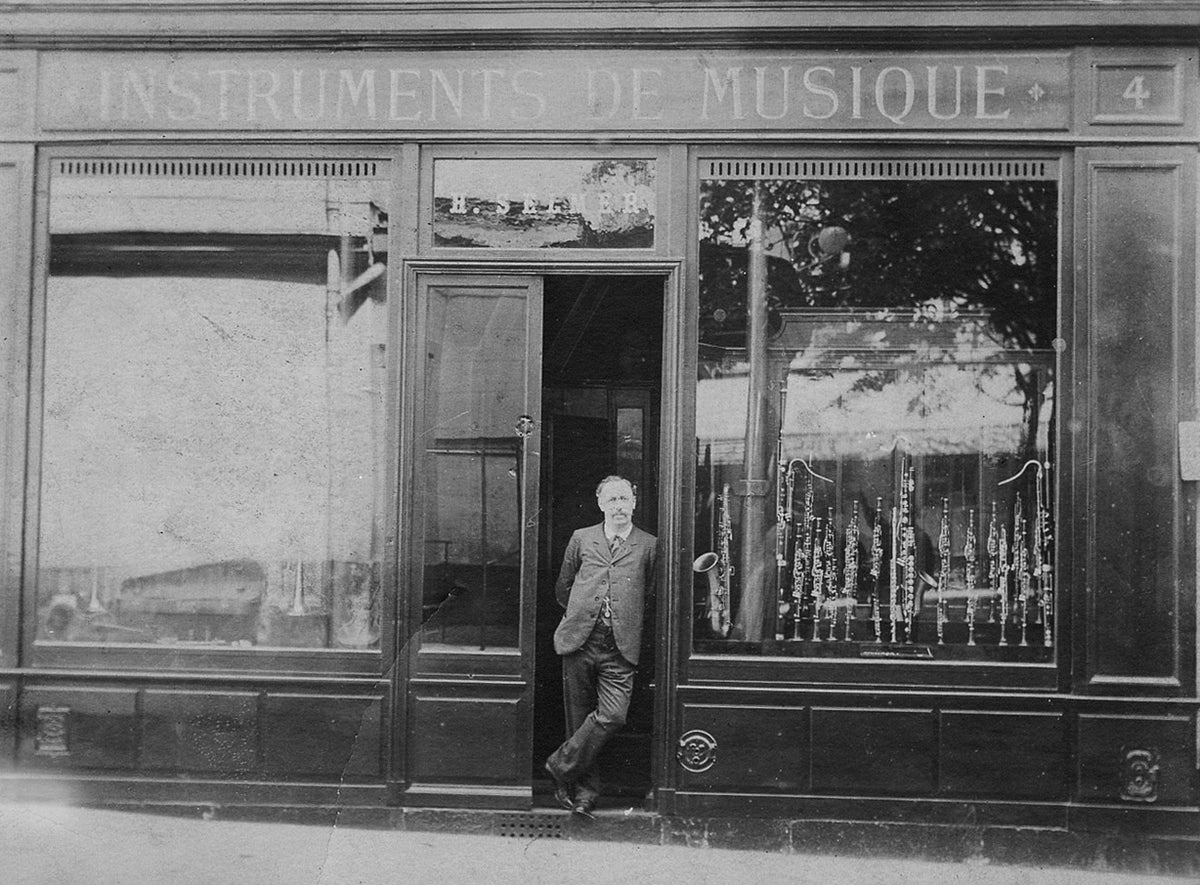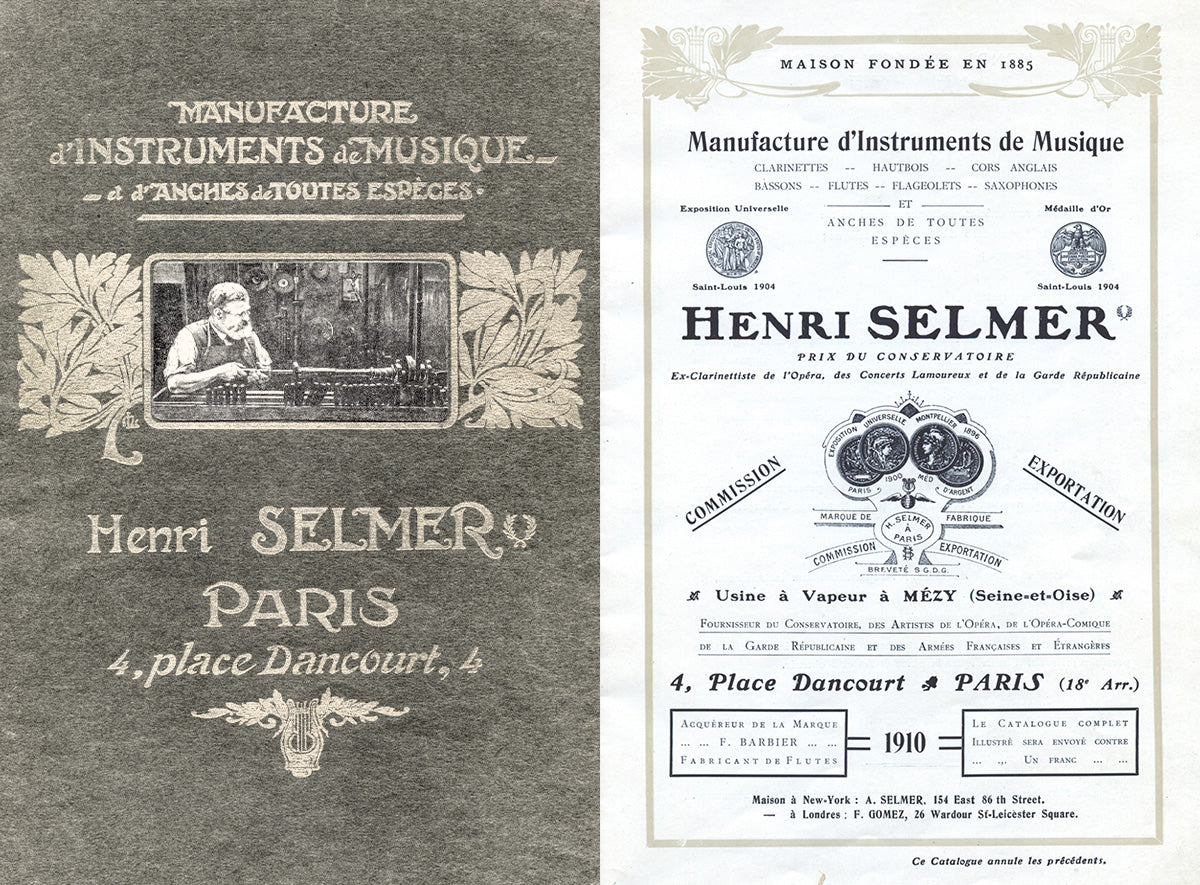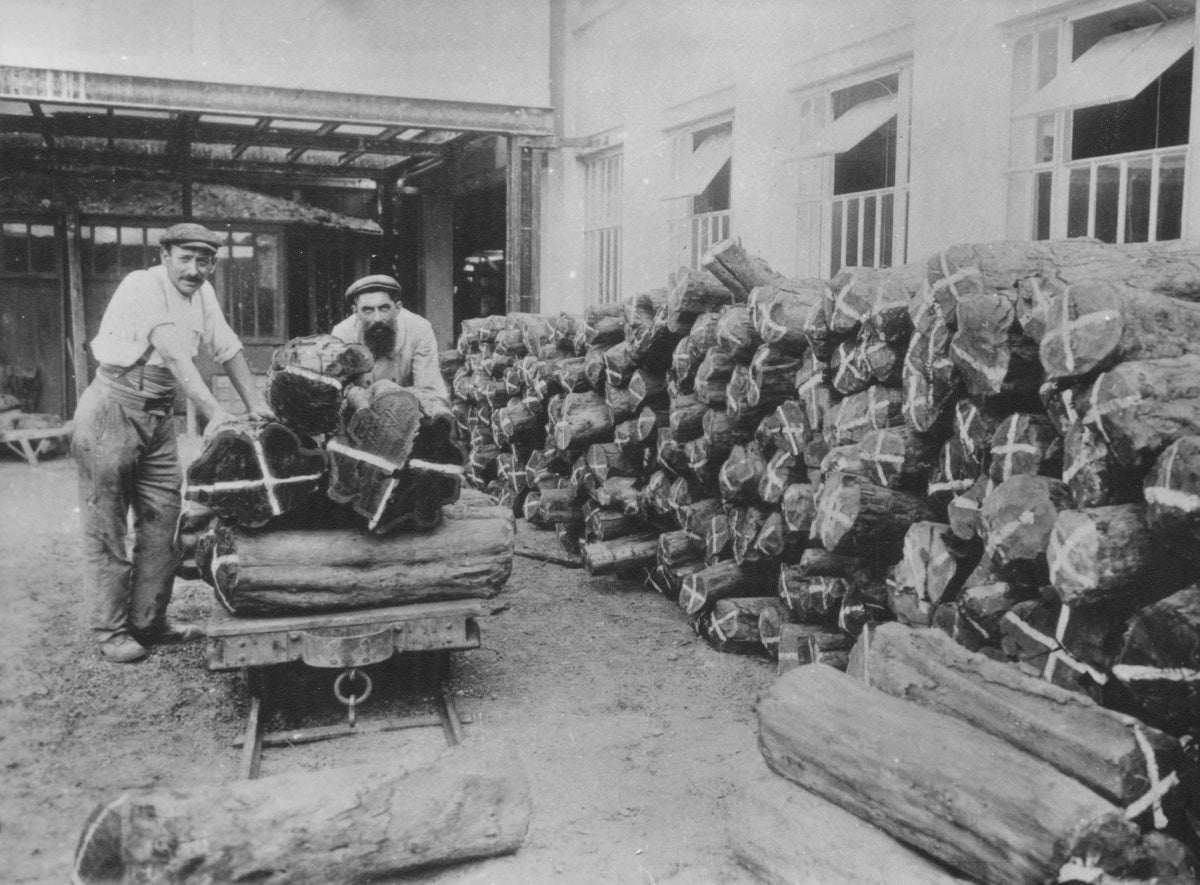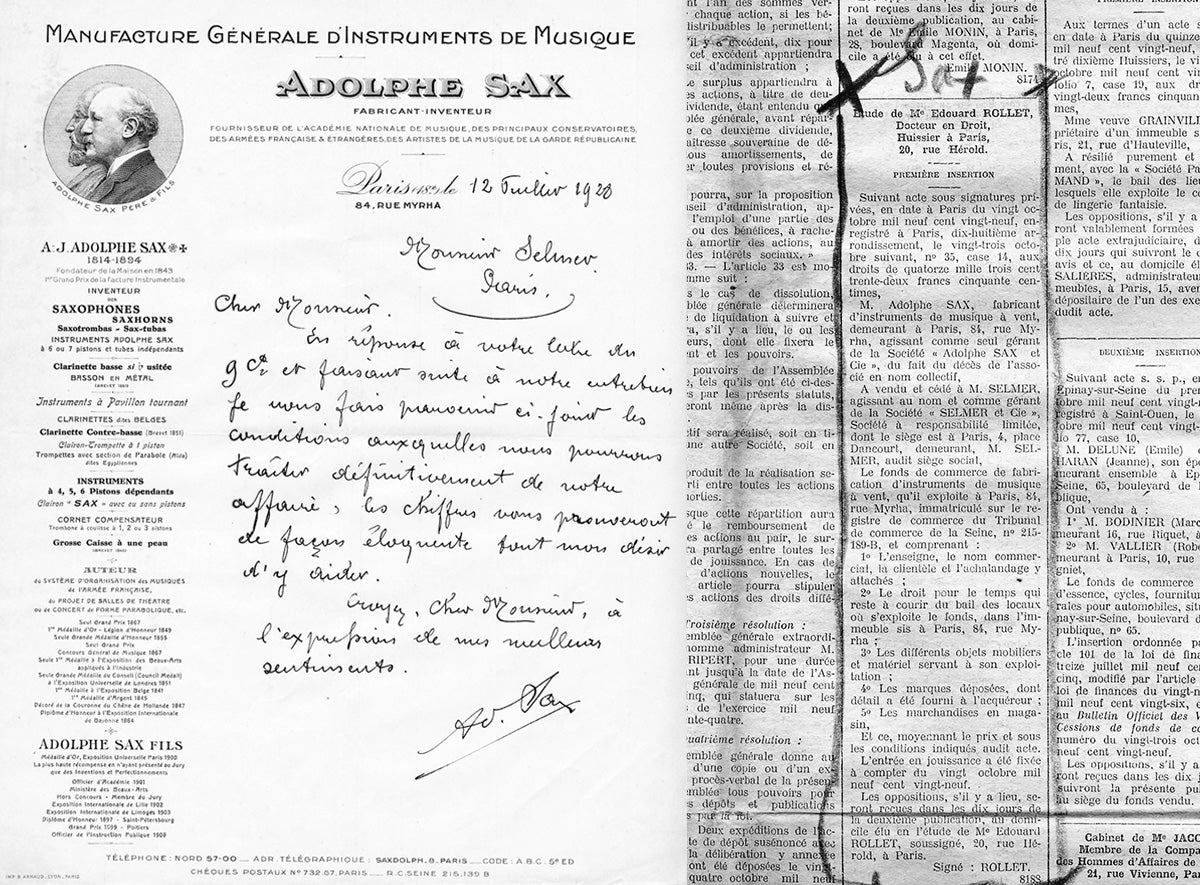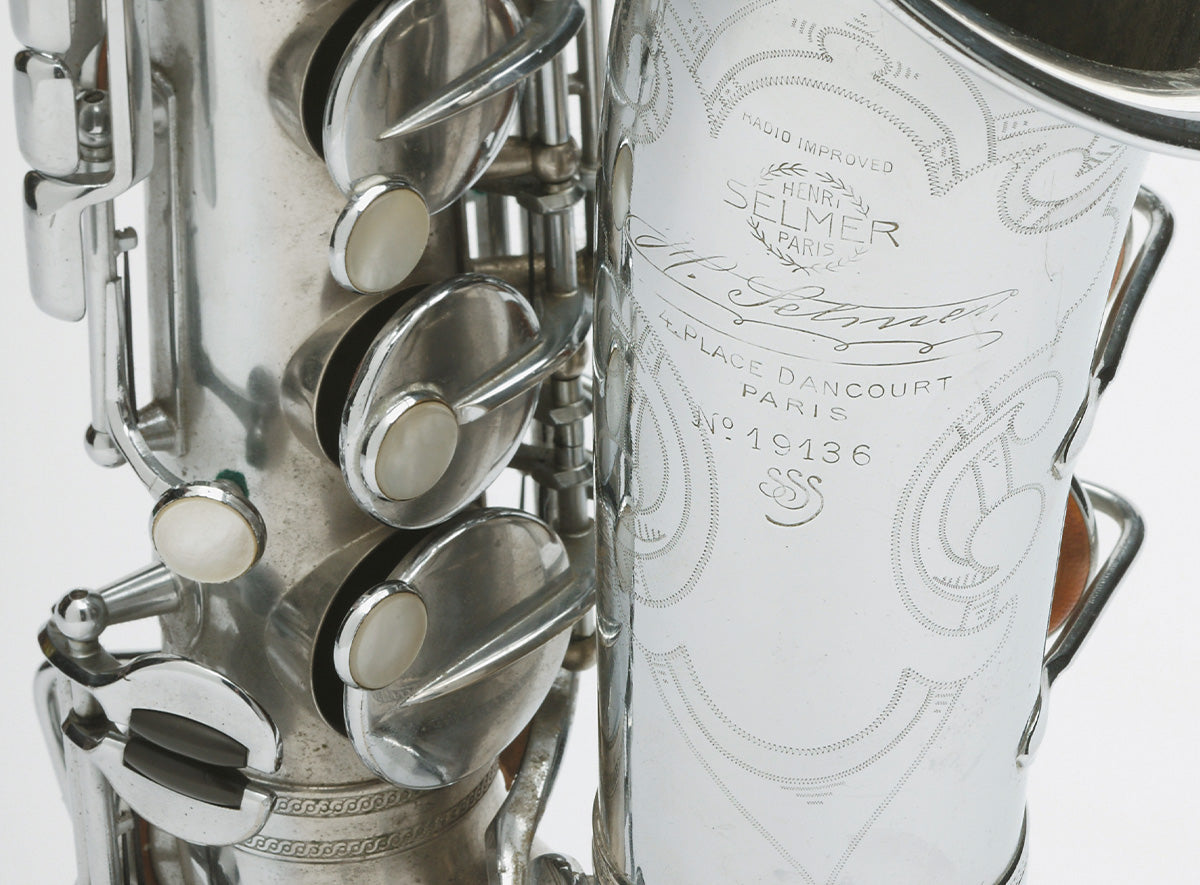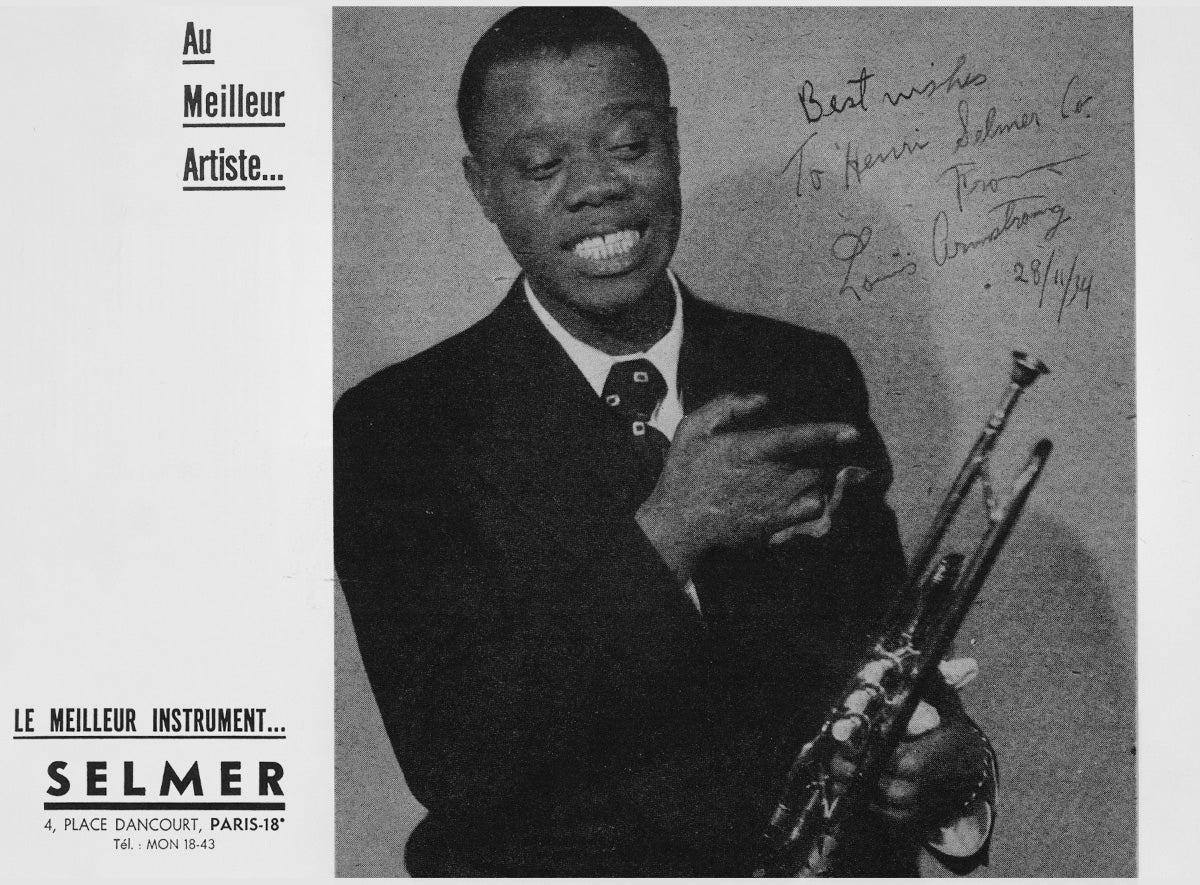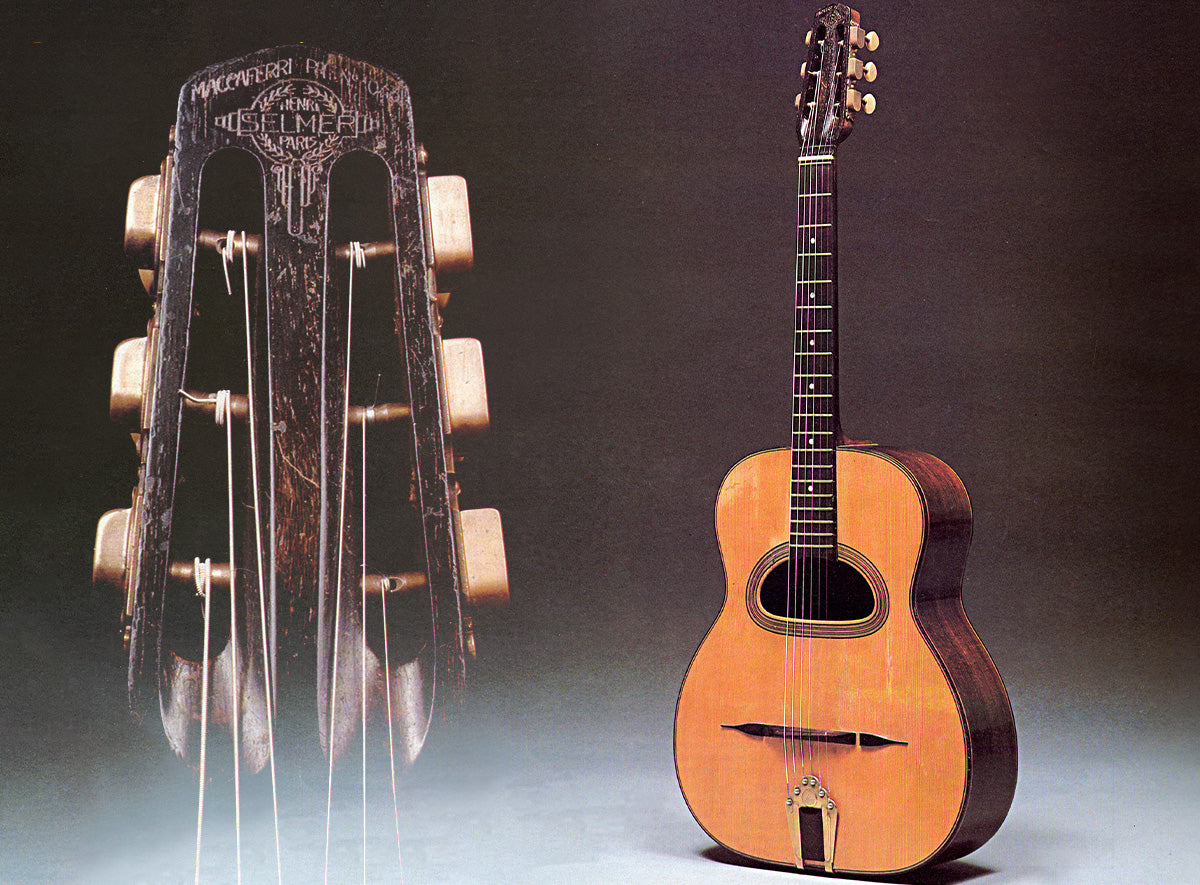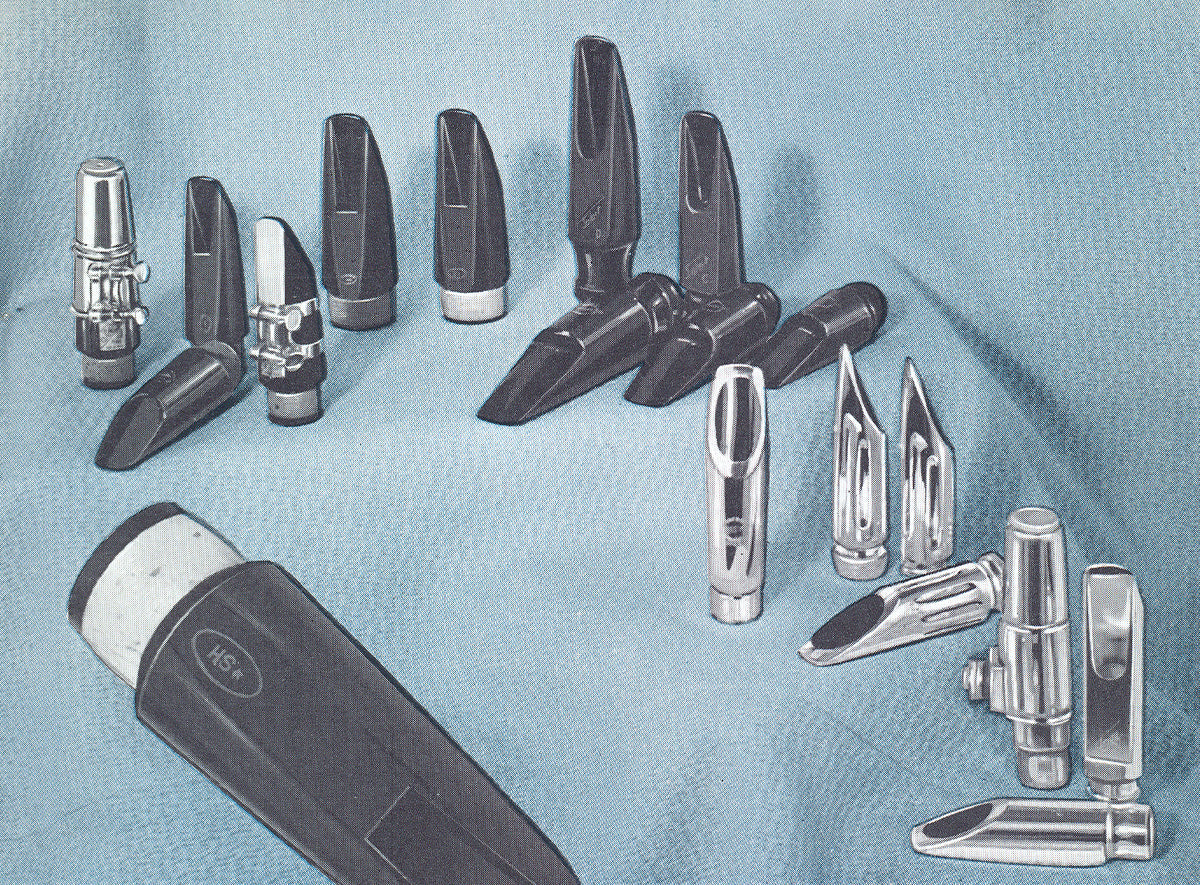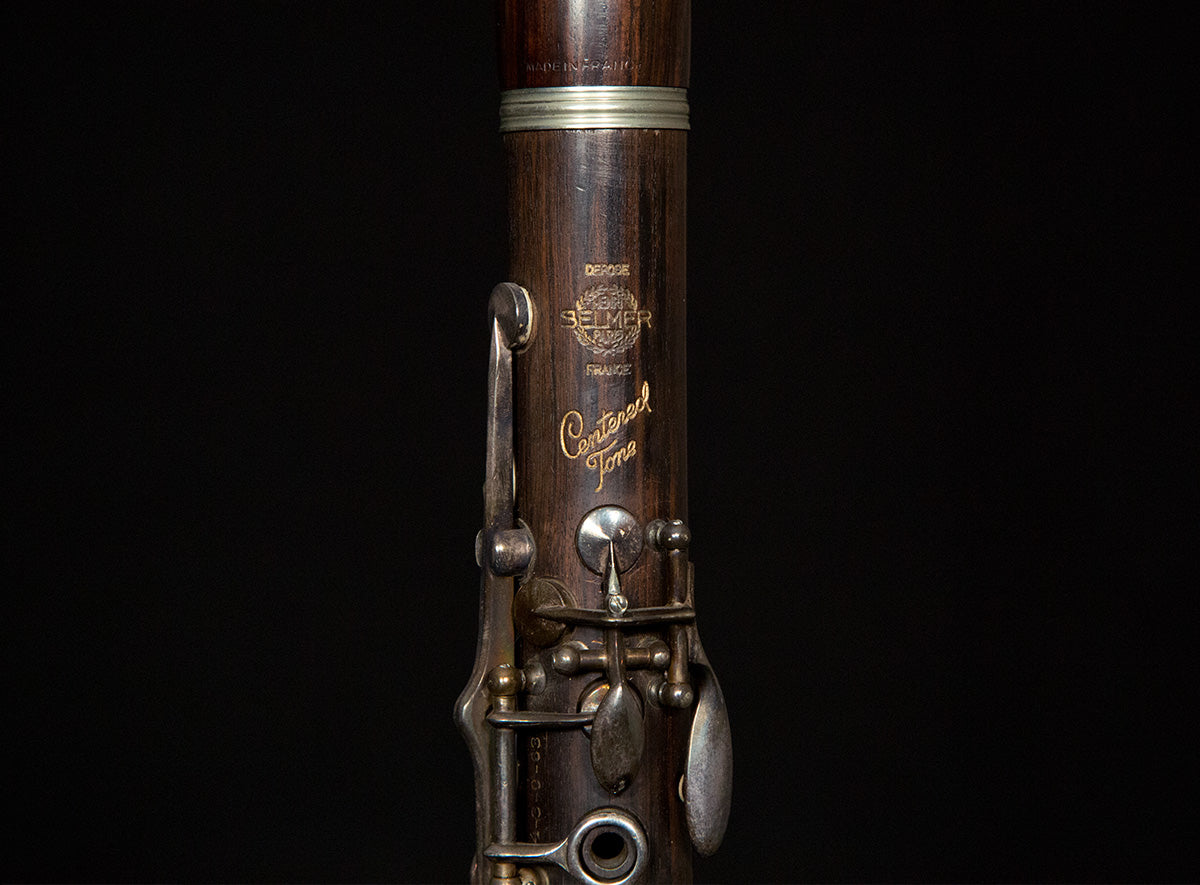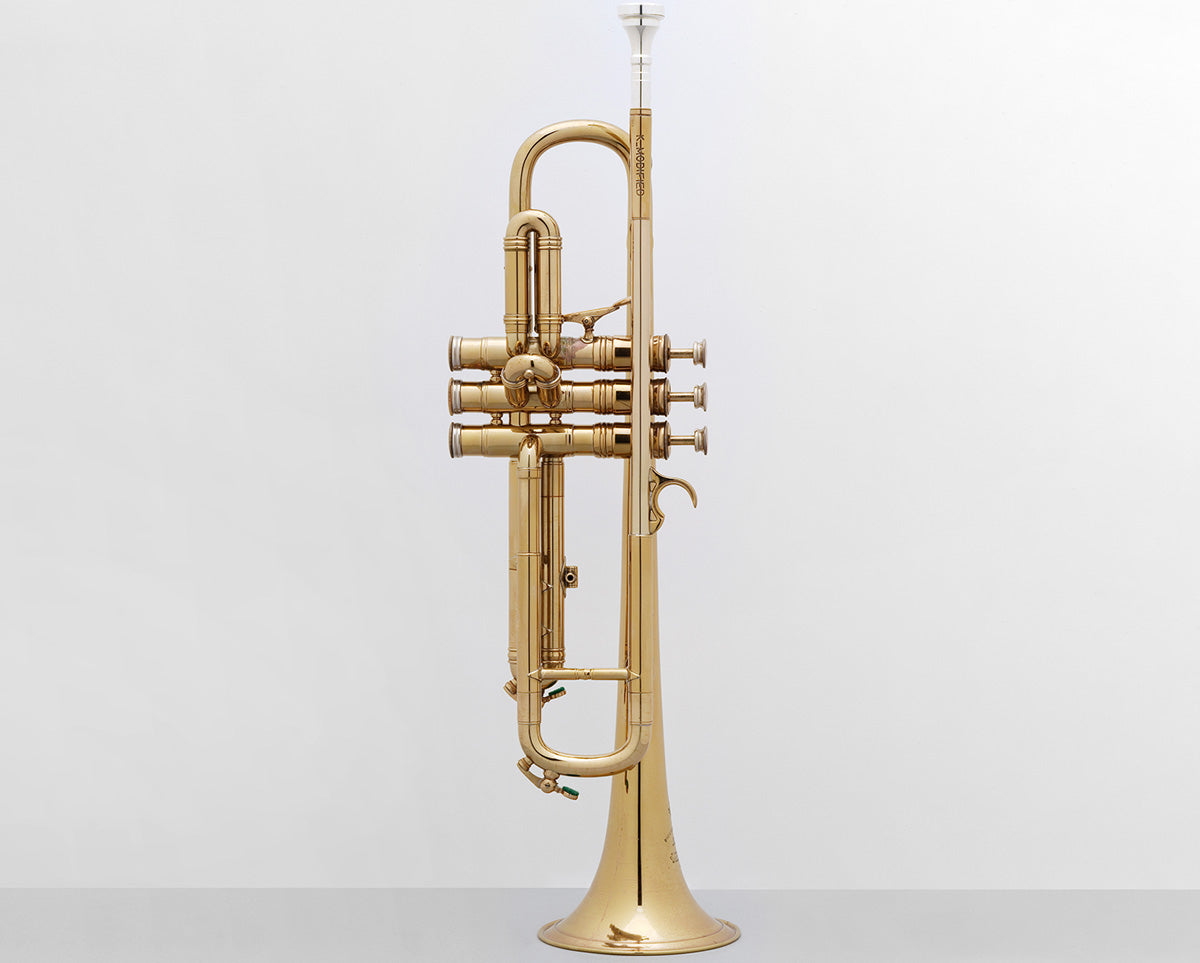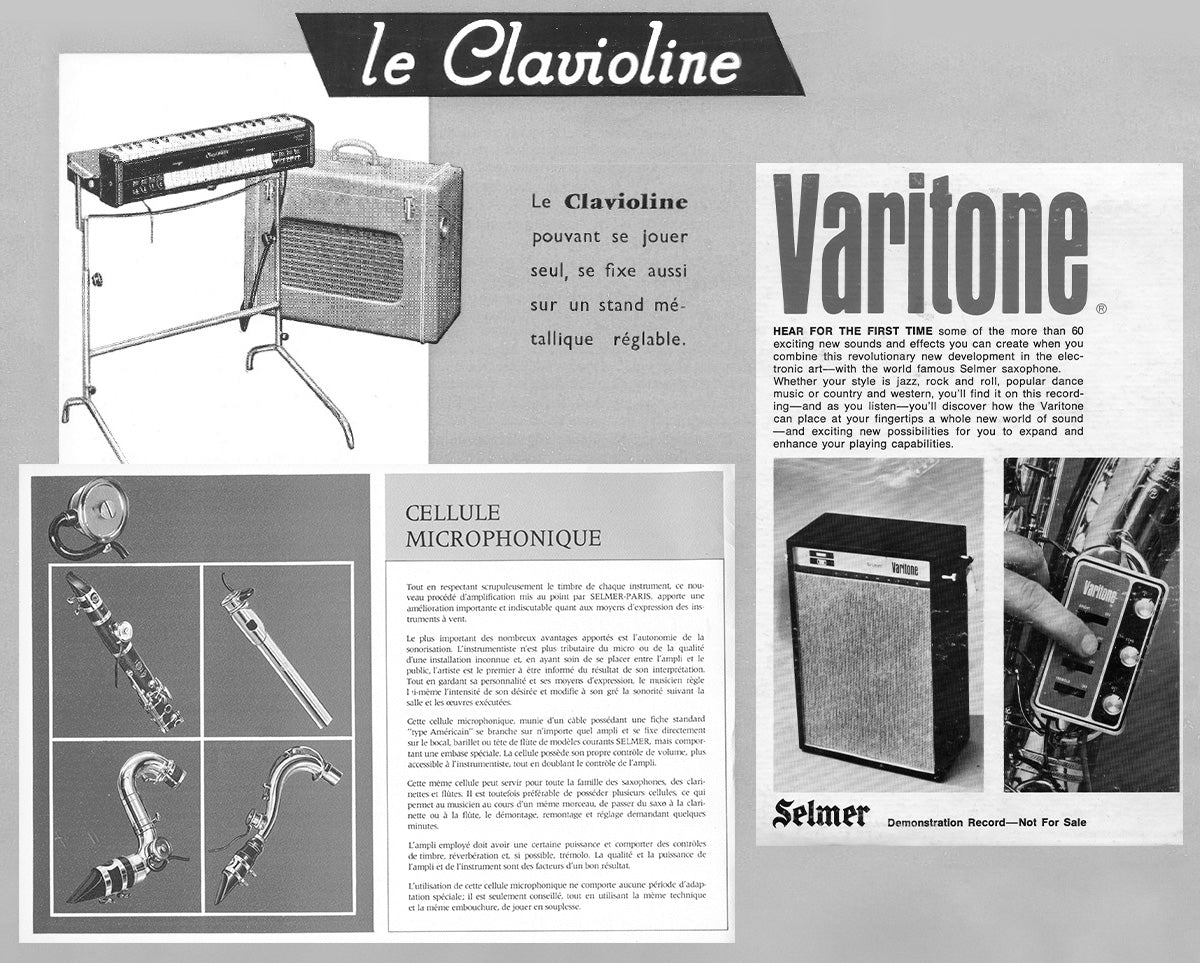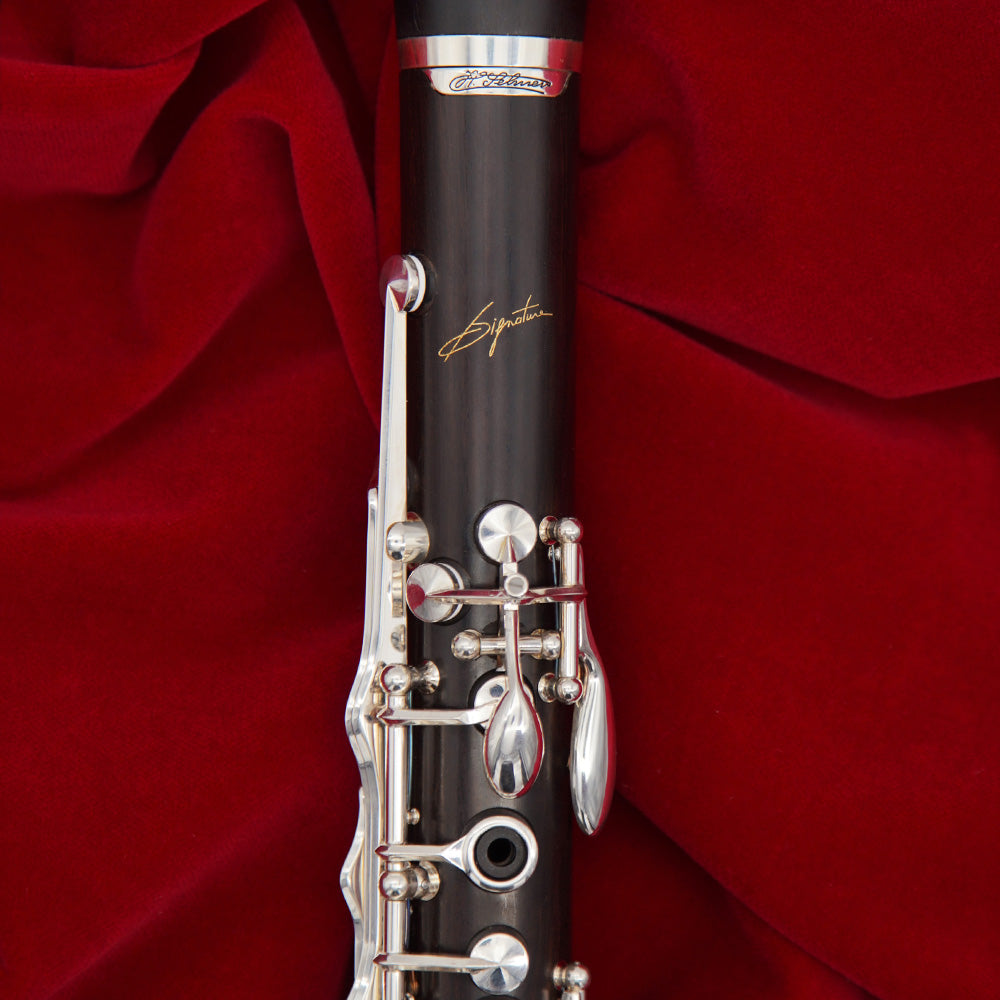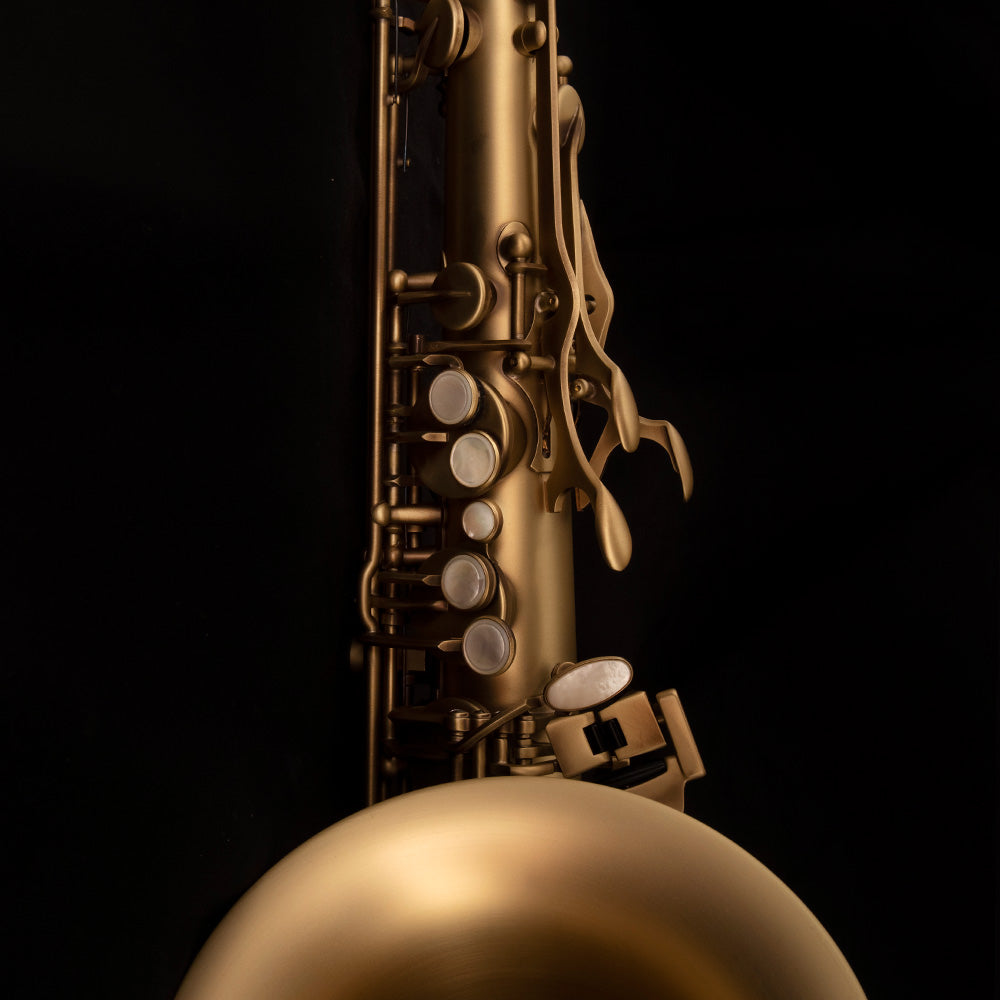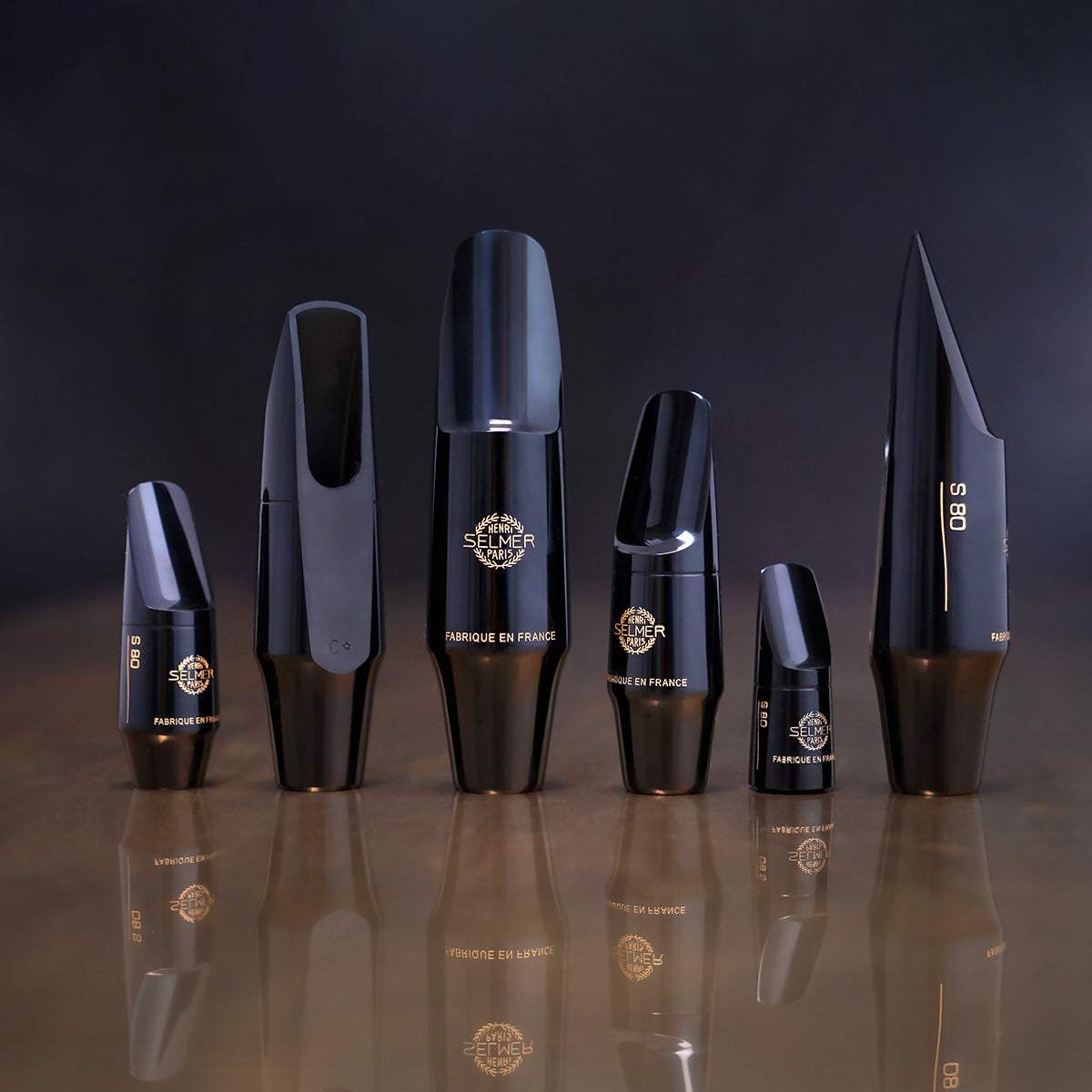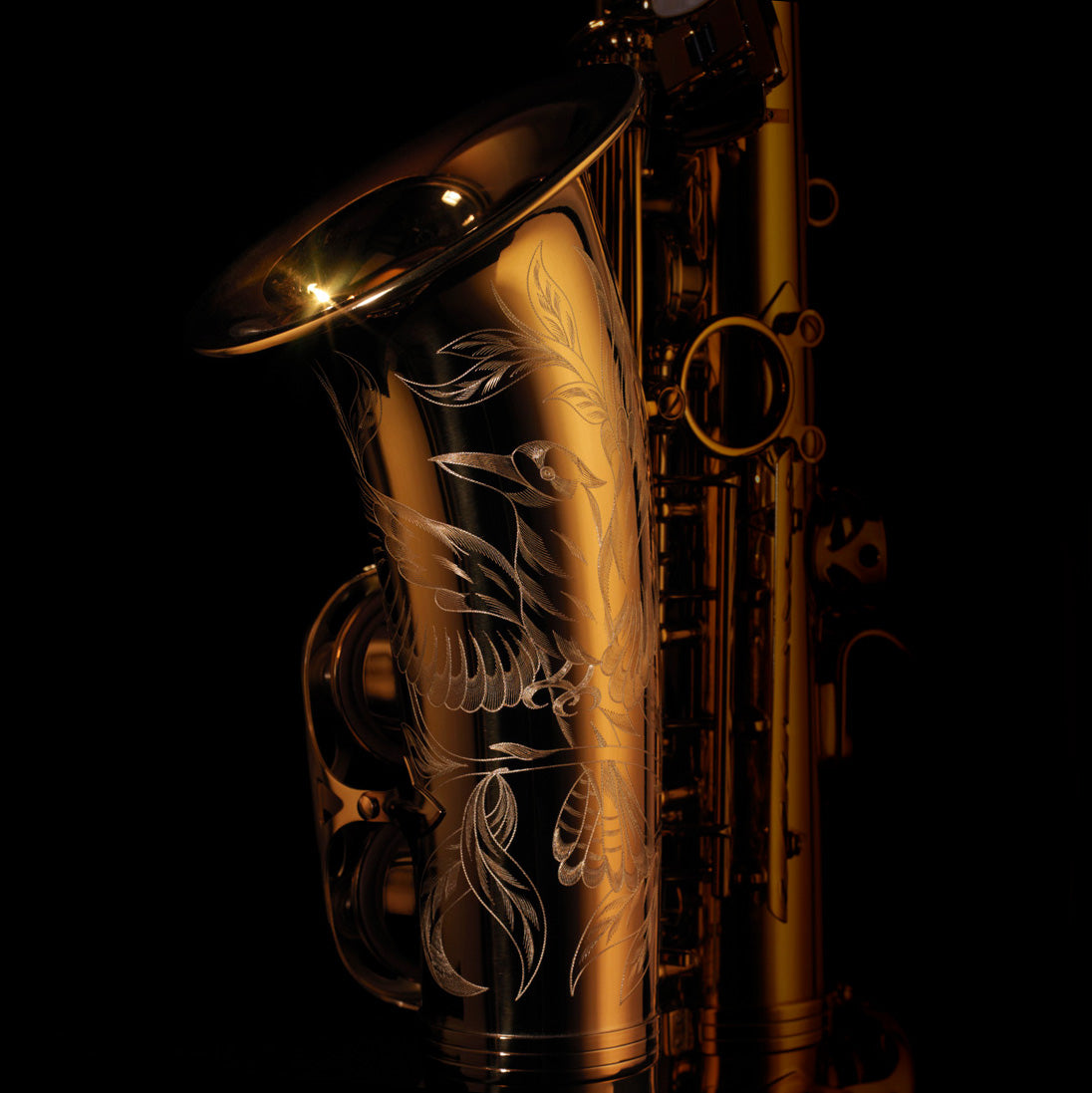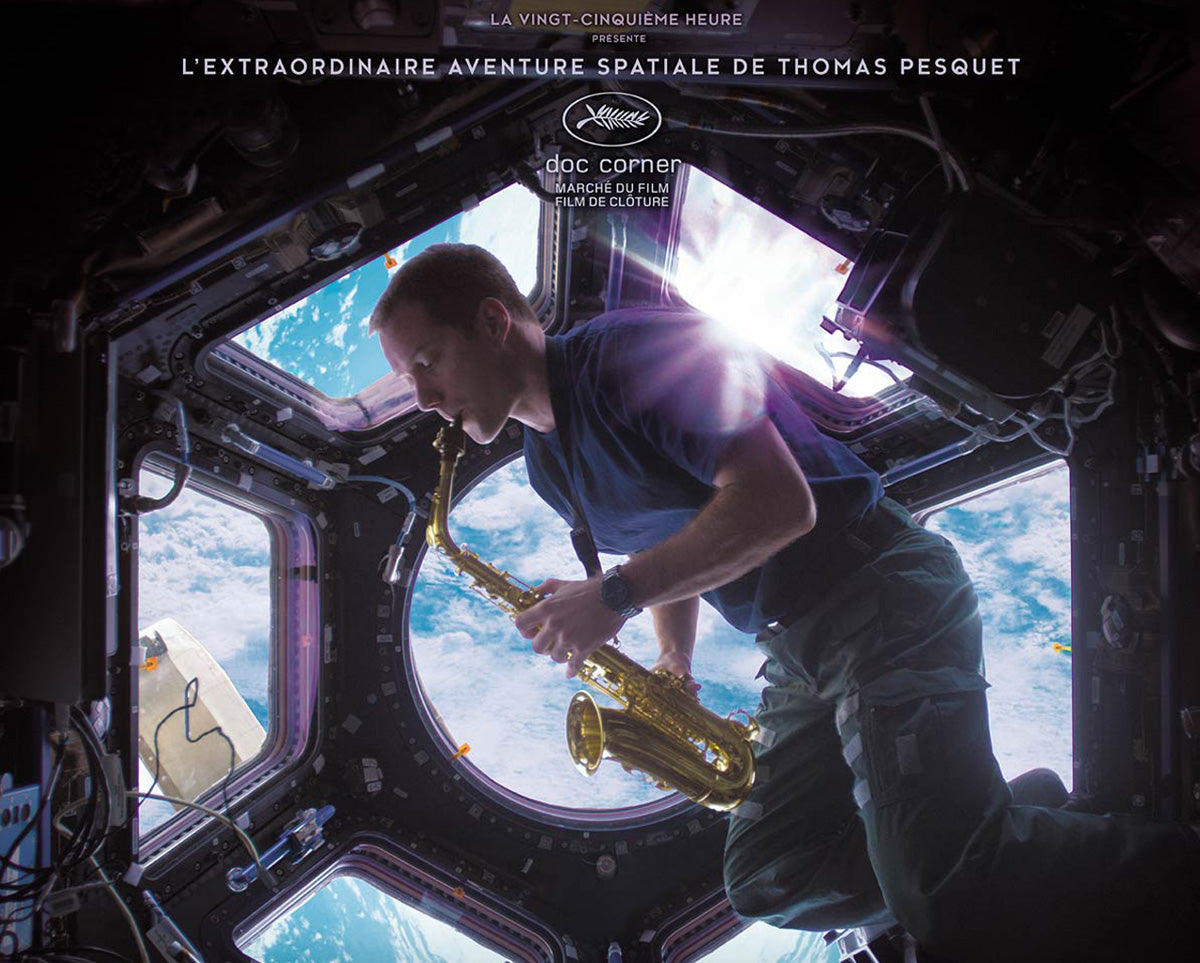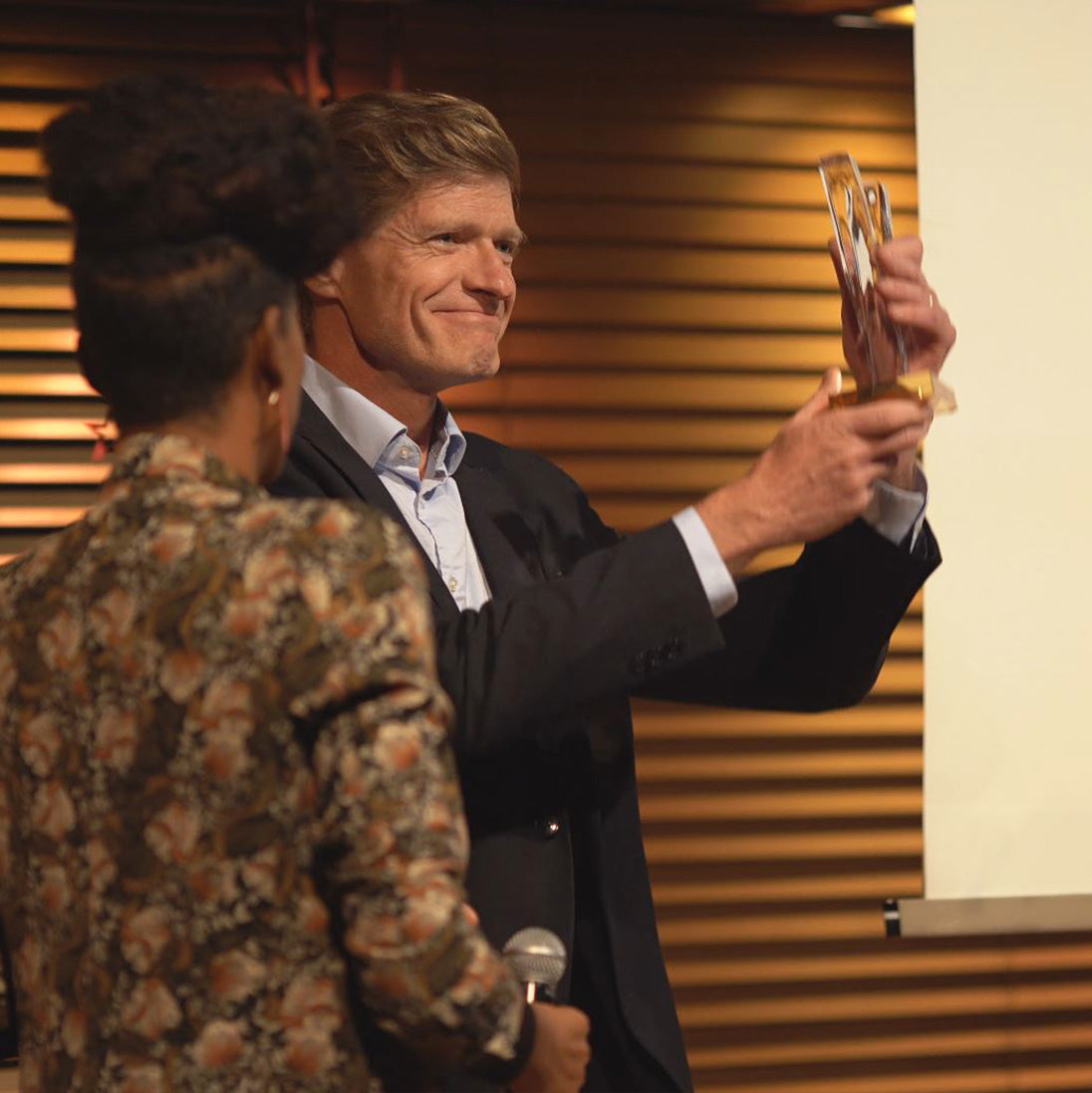Notre histoire
Birth of Adolphe Sax
Born in 1814 in Dinant (Belgium), Adolphe Sax studied at the Brussels Conservatory and began making instruments in the workshop of his father, a renowned instrument maker in his own right.
From a young age, he demonstrated exceptional skill in this field, as well as great creativity. At the age of 15, he presented his first instruments – two flutes and a clarinet – at the Brussels Industrial Competition.
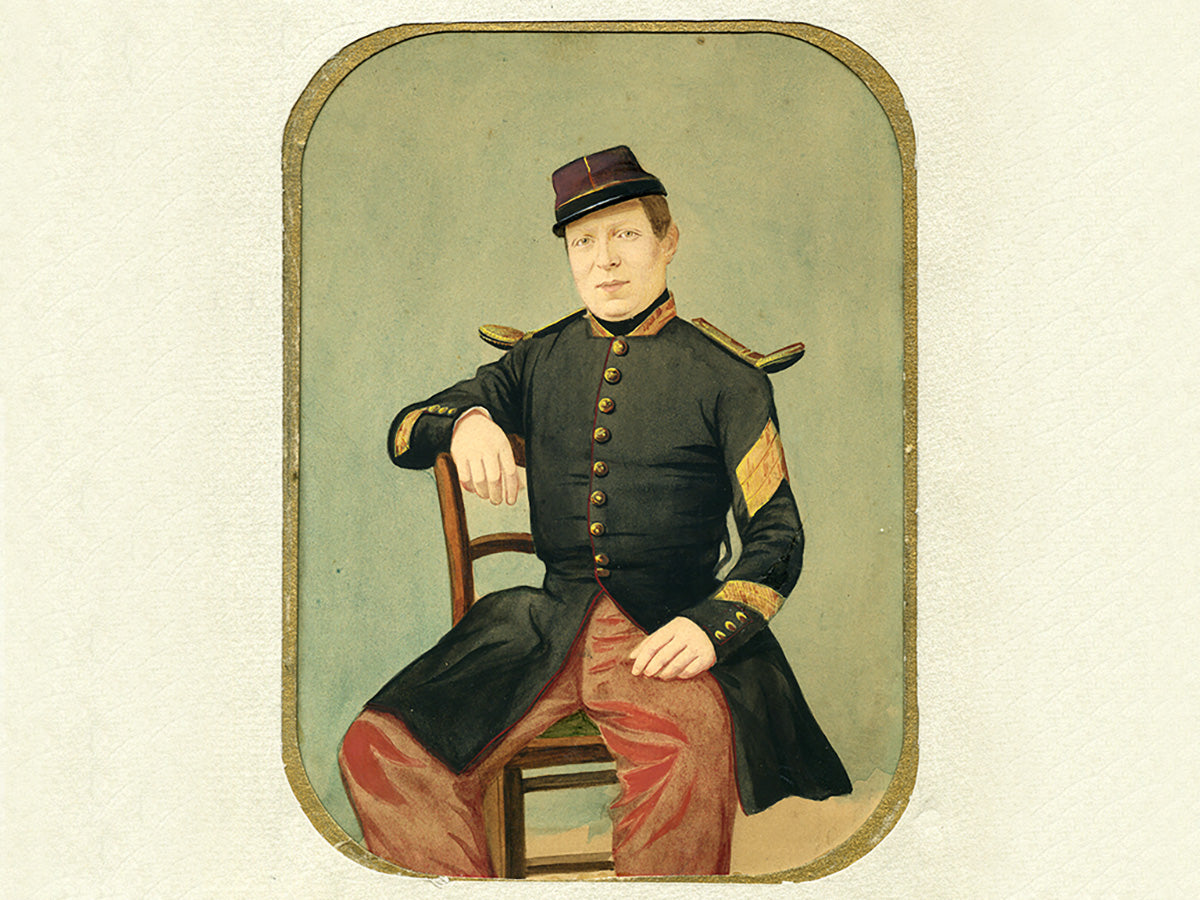
Birth of Charles-Frédéric Selmer
Like his father, Jean-Jacques Selmer, and his grandfather, Johann Jakobus Selmer (born in 1749), Charles-Frédéric Selmer became a military musical director as well as a teacher. From 1853 to 1867, he was musical director for the 9th line infantry regiment.
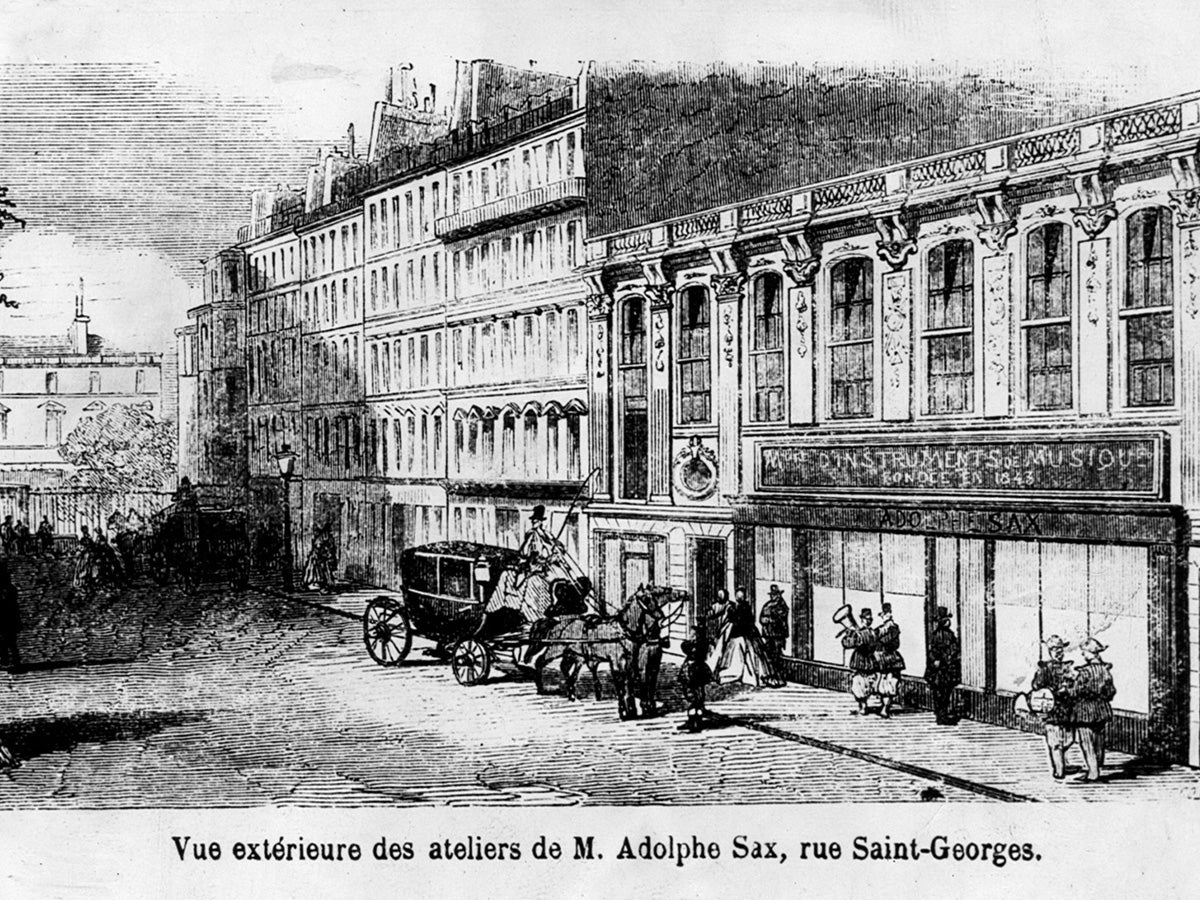
Adolphe Sax moves to Paris
In 1842, Adolphe Sax moved to Paris, where he established a small workshop on rue Neuve-Saint-Georges with up to 191 workers in 1848, producing around 20,000 instruments in the period between 1843 and 1860.
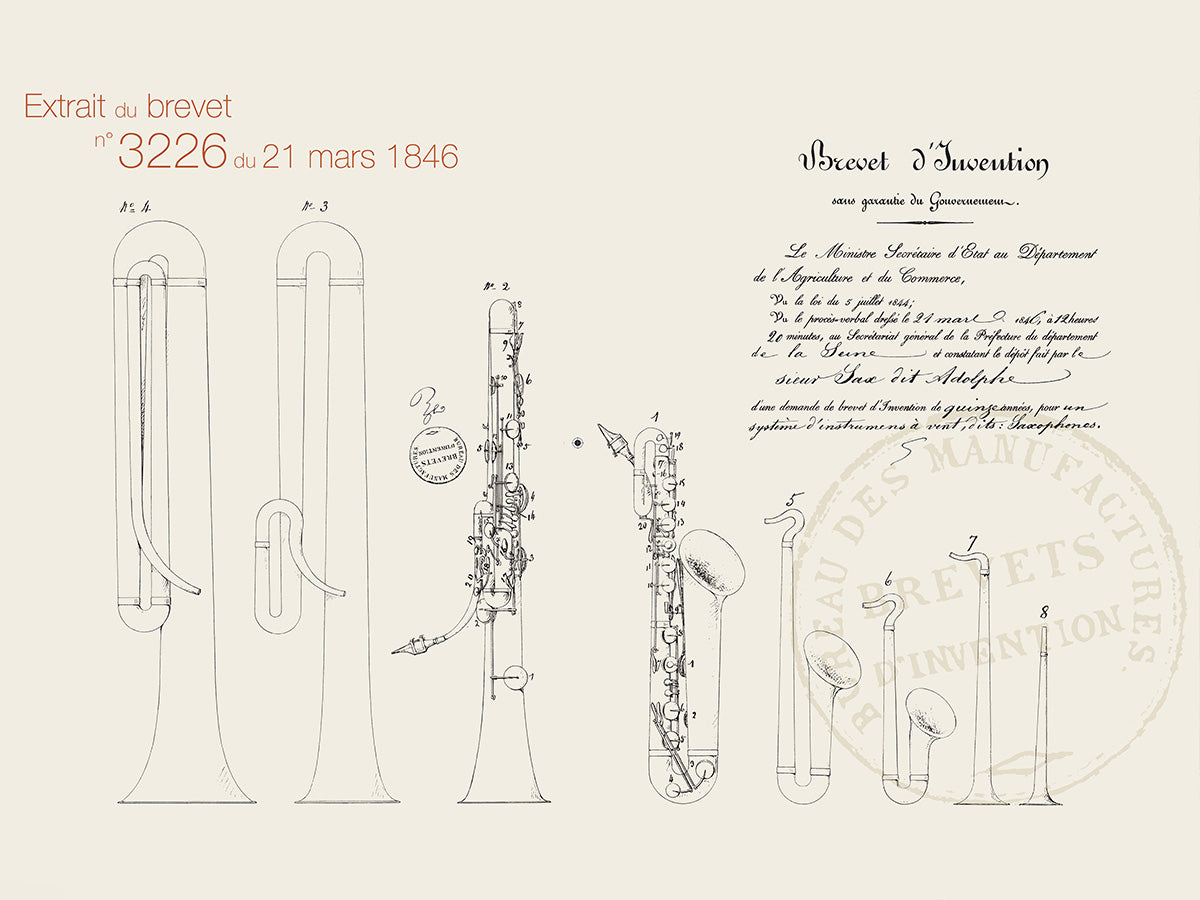
Invention of the saxophone
It wasn’t enough for Adolphe Sax to invent the saxophone, or to limit himself to one single instrument. He always intended to develop a family of instruments, covering the widest range of registers and facilitating the instruments’ integration within the orchestra.
First came the family of saxhorns, comprising six members, for which he registered a patent in 1843; next came the saxotrombas family, with seven members, patented in 1845.
On March 21st, 1846, he registered a patent for a system of wind instruments: the saxophone family, comprising 8 members.
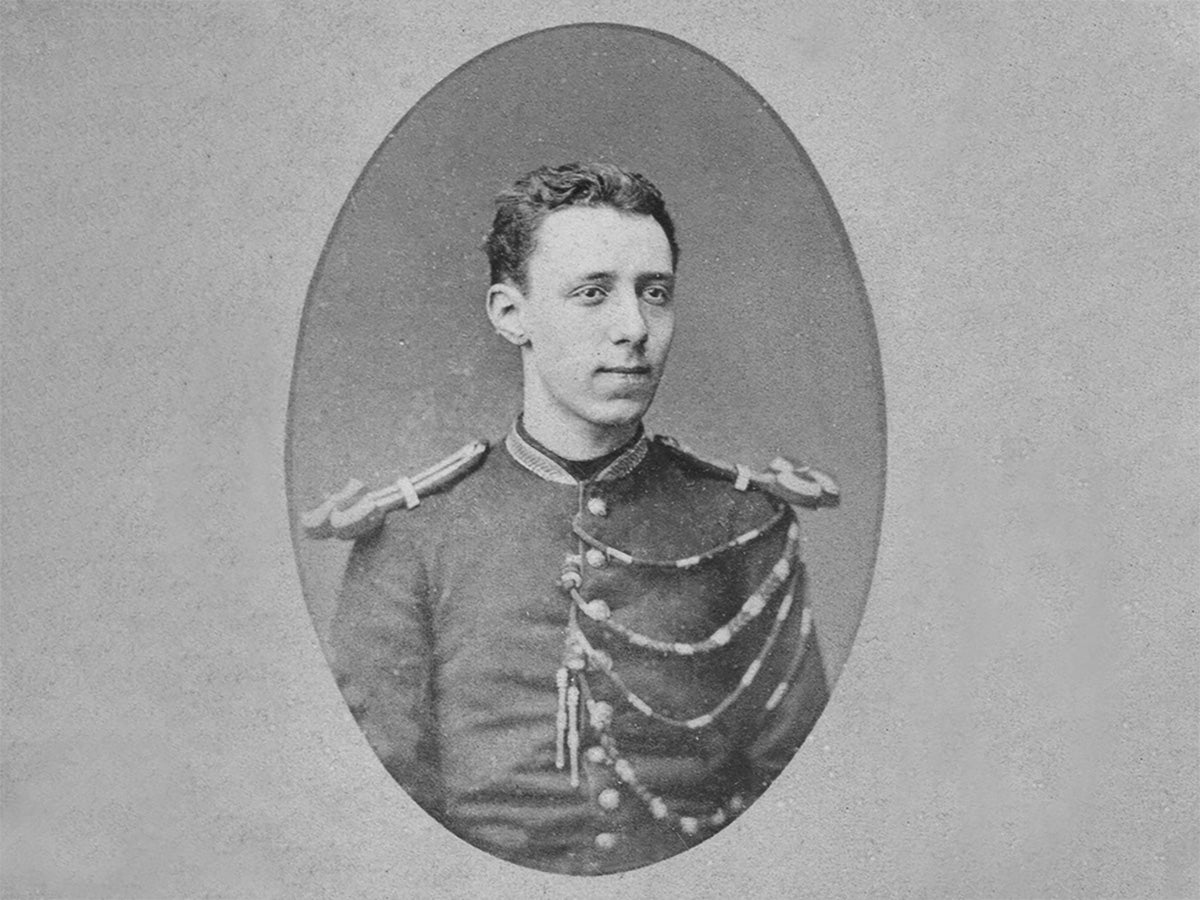
Henri Selmer, a promising musician
Henri Selmer, son of Charles Frédéric, who died in 1878, graduated from the conservatory (M. Leroy’s clarinet class).
At age 22, he became a musician in the Republican Guard, where he remained from 1878 to 1881.
He would be a clarinet soloist in the Lamoureux Orchestra and then at the Opéra de Paris.
First workshop
In 1885, Henri Selmer launched his business, making reeds and mouthpieces. The Soloist reed, in production until the 1970s, would leave its mark on generations of musicians.
From 1898, with the support of a craftsman, he would begin clarinet fabrication, setting up his workshop in the neighborhood of Montmartre at 4 Place Dancourt.
Gold medal
The Universal Exhibition of 1904 in Saint Louis assembled over 60 nations to exhibit their most recent technologies and creations in numerous fields.
Alexandre Selmer, a clarinetist at the Philadelphia Orchestra at the time, presented the first clarinets by Henri SELMER Paris, made in France by his brother Henri. They were a great success at the exhibition, winning the gold medal.
Two years later, Alexandre opened a shop in New York where he began selling SELMER clarinets; this structure would become our subsidiary SELMER USA. In 1910, he decided to return definitively to France, entrusting his position to one of his students, George Bundy.
First catalogue
The 1910 catalogue offered a great variety of instruments and mouthpieces.
It included a wide range of clarinets, from the B♭ Boehm system clarinet with 17 keys, 6 rings and 24 tone holes, to the Müller clarinet with 13 keys, as well as the Albert system clarinet. Alto and bass clarinets also featured.
Inauguration of the factory
In 1919, the production workshops moved to Mantes-la-Ville and Maurice Selmer, Henri’s son, joined the company.
At the time, the site had been selected for its proximity to the Seine (facilitating the transport of raw materials) and the railway serving Paris’s Saint Lazare Station (facilitating the transport of instruments to stores and contact with musicians). Still today, the Parisian neighborhood around the Rue de Rome, located near the Saint Lazare Station, is home to many musical instrument stores.
First SELMER saxophone
The first saxophone made by SELMER was officially presented on December 31st, 1921. It was the Série 1922, which would become the Modèle 22.
Innovative improvements were made in the fabrication process, including drawing out the tone holes – a technique adopted today by manufacturers around the world.
New models
Encouraged by the warm welcome that this alto saxophone received, SELMER decided to move forward with production of the B♭ straight soprano, the curved soprano, the soprano in C, and tenor saxophones in B♭ and C.
Production of the Modèle 26 took place from 1926 to 1928. This model featured a new neck insignia and a new form for the neck octave key, called the wishbone. Several models with the name Modèle 28 existed alongside unnamed models launched the same year, a practice that would continue until 1931.
In 1927, SELMER released the metal clarinet, available in the Boehm and Albert systems. It was presented at the International Exhibition of Geneva and the Foire de Paris (May 1927).
Acquisition of the Adolphe Sax workshops
In 1929, Henri Selmer acquired the firm Adolphe SAX & Cie, with its workshops located at 84, rue Myrha in the 18th arrondissement of Paris.
Incorporating its personnel and savoir-faire into his business, Selmer became the inventor’s successor.
This acquisition would also allow the company to start making brass instruments, one of the great specialties of SAX at the time.
Super Sax
From 1931, certain saxophones would be marked with a triple “S” for “Selmer Super Sax”. They do not belong to a single new series, but rather feature across two models:
-The model nicknamed the Cigar Cutter by the Americans (1931-1934), thanks to the shape of its octave key, is also distinguished by its V-shaped guard and the nickel silver tightening tenon on the neck, which is thicker and formed from a solid piece.
- The Radio Improved (1934-1935), whose name makes reference to the rise of radio broadcasting, is a very rare model.
Acquisition of the Millereau workshops
In 1931, SELMER bought the firm MILLEREAU, a maker of brass instruments. Trumpets, trombones, bugles, and horns gradually found their place within the SELMER catalogue.
1933 marked the launch of the Armstrong trumpet, which would be renamed Balanced.
Louis Armstrong, a loyal fan of this trumpet, mentioned it in the recording Laughin’ Louie: “My little Selmer trumpet, bless her little heart.”
Guitars
In 1932, joining forces with the luthier Mario Maccaferri, SELMER embarked on its guitar-making adventure.
Born from ingenious and complex fabrication processes, these guitars were produced for 20 years at the workshops in Mantes-la-Ville.
Django Reinhardt’s preference for this guitar made it popular throughout the world.
Despite the small number of instruments made (around 900), the SELMER MACCAFERRI is the French guitar that enjoyed the greatest renown abroad.
Balanced Action
Henri SELMER Paris revolutionized the world of saxophones with a new model baptized the Balanced Action.
The instrument laid the foundation for the modern saxophone, and most of the advances from this time period would be retained in present-day models.
The equilibrium in the action of the keywork and the even distribution of masses give it the name Balanced Action.
Coleman Hawkins would choose to play on this model in the late 30s, using it to record his famous rendition of Body and Soul.
Mouthpieces
At the end of the Second World War, the firm continued to innovate, launching the mouthpieces Artist and Airflow for the saxophone and clarinet, as well as the Soloist for the clarinet – models distinctive for their great flexibility.
Marcel Mule, a soloist in the Republican Guard and the first professor of saxophone at the Paris Conservatory since Adolphe Sax, joined the company as an artistic advisor in 1948. The collaboration began with the development of the Métal Classique mouthpiece. Following the success of this model, it would be released several years later in the Métal Jazz version. The Soloist range of ebonite mouthpieces for the saxophone was introduced in 1951.
Super Action
This saxophone, also known by the name Super Balanced Action (SBA), is in some ways the transitional instrument between the Balanced Action and the Mark VI.
Compared with the Balanced Action, the bow is detachable, allowing for much easier maintenance. The body and bow are connected by a ring with two screws, while the bell remains soldered.
The main evolution is the offset right-hand/left-hand keywork; this ergonomic improvement makes playing more comfortable.
Mark VI
The production of the Mark VI, a truly legendary instrument, spanned over about 20 years.
The keywork offers exceptionally comfortable play with the removal of numerous constraints. On the new neck octave key, the Selmer “S” is engraved against a blue background.
The flexibility of this instrument would soon seduce numerous saxophonists, notably Sonny Rollins, Stan Getz, Dexter Gordon, and John Coltrane, who would record his mythical A Love Supreme with his tenor and soprano Mark VI saxophones.
Centered Tone
Adopted in 1935 by Henri SELMER Paris, the Boehm ring system had marked an important change, establishing an international standard and allowing the mythical Radio Improved and Balanced Tone clarinets to conquer the United States in the decade from 1930 to 1940.
But it was in 1954 that the great revolution took place, with the release of the legendary Centered Tone, Benny Goodman’s preferred clarinet.
K-modified trumpet
The K-modified trumpet retains the improvements of the Balanced (with the valves moved towards the front) and integrates a modified fitting system. Louis Armstrong took to the instrument, playing it until the end of his career.
In 1966, the trumpetist Maurice André became the artistic advisor for SELMER trumpets. He participated in development of the piccolo trumpet with 4 valves in 1967. This model would lay the foundations for the modern piccolo trumpet, becoming the reference in the market. He also collaborated in the design of the B♭ and C Radial 2 trumpets, released in 1968.
Electrification
In 1954, SELMER also began selling the Clavioline, invented by Constant Martin.
It was one of the first electronic musical instruments to be widely marketed, enjoying great success in the 1950s. Its keyboard produced sounds imitating the timbres of acoustic instruments (trumpet, violin, oboe, etc.).
In the 1960s, SELMER also launched a microphone division, specially intended for amplifying wind instruments, and the Varitone, a system comprising an integrated microphone and a control unit, offering effects such as tremolo, simultaneous sub-octaves, and echoes, all connected to a specialized amplifier.
An entire range of amplifiers and speakers would also be developed.
Clarinets
The Série 10 clarinets came onto the market in 1971. They featured new proportions in the barrel, body, and bell, as well as a different bore, designed to meet the needs of clarinetists in major contemporary orchestras. They would be followed by the clarinets 10S in 1977 and 10SII in 1993.
The MARCHI System clarinet, which appeared in the catalogue of August 1975, represents one of the major contributions of the 20th century, in terms of instrument manufacturing and widening the repertoire.
1984 saw the birth of the Recital model, a clarinet unique for its woody quality.
Several models would complete the range over the following two decades: the Prologue clarinet, aimed at student players, the Signature, developed with the help of Jacques Di Donato, and the Privilège, establishing a new standard in the high-end sector.
Saxophones
After 20 years of production, the Mark VI was succeeded in 1975 by the Mark VII, easily recognizable by its wide, solid keywork.
In 1981, the Super Action 80 marked a change of direction: the keywork was redesigned with smaller, more compact keys than on the Mark VII, following requests by musicians.
In 1986, the Super Action 80 Series II saxophone was born. The ultimate in versatility, this saxophone will soon celebrate its 40th birthday, which makes it the most widely produced model.
In the 1990s, Claude Delangle and Patrick Bourgoin participated in the design of the Series III saxophone line. For the first time in the company’s history, the new model did not replace the old one, but instead added to the range.
In the early 2000s, SELMER launched the Reference alto and tenor saxophones, in homage to the iconic Balanced Action and Mark VI models.
Mouthpieces and reeds
The S80 mouthpiece family appeared in 1974. One of its main innovations was its famous square chamber, entirely made, for the first time, by a mortiser, allowing for perfect reproduction. The most famous of the S80 family is, without contest, the C*. It is still the most widely selling mouthpiece in the world, and has been for decades.
Clarinet mouthpieces also benefitted from fabrication developments with the arrival of the C85 model.
In the late 1980s, the S90 mouthpiece would find its place alongside the S80, offering slightly more timbre and greater projection.
At the turn of the 20th century, two new mouthpiece models were created: the soprano Super Session mouthpiece, and the alto and tenor Soloist mouthpieces, directly inspired by the legendary mouthpiece made in the 1950s. Then the Spirit mouthpiece was launched in 2010.
As for reeds, in 1975 the Omega model replaced the Soloist model, in production since 1885. It would be produced until 1990.
Tribute to Bird
Between 2005 and 2012, Henri SELMER Paris produced 5 Collector versions of a saxophone in homage to Charlie Parker, a.k.a. Bird.
Selmer’s top engravers developed original engravings based on the poetic theme of the bird, with variations relating to five continents.
2005 saw the arrival of the Hummingbird model, a Référence alto decorated with an American hummingbird, which was followed in 2006 by the Kookaburra, an emblem of Australia. In 2007, the African continent was referenced with the iconic Flamingo. Inspired by its legendary namesake, the Firebird Collector from 2009 celebrates the European continent. The last of this unique series, released in 2012, would be the Dragon Bird, symbolizing Asia.
Renewing the range
2013 marked a new dynamic led by the mouthpiece range, with the release of the Concept mouthpiece for the alto saxophone, and the models Concept and Focus for the bass clarinet, which enjoyed immediate success.
The momentum continued in 2014 with the B♭ Présence clarinet, the Prologue alto saxophone mouthpiece, and the Axos alto saxophone, all entry-level professional models.
Launched in 2018, the Claude Delangle mouthpiece reflects a special relationship between tradition and the latest developments in the Concept family.
Released in the same year, the film 16 Sunrises recounts the story of Thomas Pesquet during his first mission on board the ISS. The astronaut would be the first person to play a SELMER saxophone amongst the stars…
Recognized excellence
Jérôme Selmer, the founder’s great-grandson, was awarded the Artistic Committee’s Special Award at the 2018 Victoires du Jazz. The award marked the recognition of SELMER’s essential role in the history of jazz music.
In the same year, the company joined the Comité Colbert. Bringing together nearly 100 firms and cultural institutions, the collective’s mission is to promote France’s culture and lifestyle throughout the world. As a member of the French Fab program and bearing the label Entreprise du Patrimoine Vivant for its excellence in artisanal and industrial savoir-faire, SELMER prioritizes the preservation of France’s heritage in manufacturing and craftsmanship.
2018 also marked a change in the company’s shareholding. Conscious of the need to invest in order to pursue its development and continue to serve international musicians and music lovers, the company called upon the investment fund Argos Wityu. It became a majority shareholder, alongside a tight-knit core of SELMER family members and directors.
Supreme Saxophones
The creation of the Supreme alto embodies the pinnacle of age-old savoir-faire, combined with perfectly mastered fabrication tools. The instrument transcends musical genres, adapting to every type of music, playing style, and sound type.
Two years after the release of the Supreme alto – a worldwide success – the range expanded with the arrival of the tenor. It succeeds in marrying the flexibility and feeling of lightness found in historic models with the precision and pitch accuracy of modern models.
Rewind.fr
For over a century, SELMER has been producing quality instruments that contribute to the history of instrument making and bring joy to countless musicians.
In an effort to create a circular economy and offer these instruments a second life, we launched the service ReWIND.fr in 2021.
ReWIND.fr is the reference platform for second-hand instruments by Henri SELMER Paris. It allows users to purchase instruments overhauled by our top artisans, and to return old instruments to us.
New mouthpieces
Updates in the mouthpiece range have continued in recent years with the Echo clarinet mouthpiece, SELMER’s first clarinet mouthpiece made entirely in a digital manufacturing facility, offering it unrivalled production stability.
In response to requests by jazz saxophonists, we also launched the Jazz Flow mouthpiece in November 2023, which is particularly well suited to jazz and contemporary music (funk, pop, electronic music, world music, etc.).
Clarinettes Muse
The B♭ and A Muse clarinets, released in 2022, are aimed at musicians in search of an instrument with precise and direct emission.
The EVOLUTION★ system is integrated into the Muse clarinet. This innovation, based on a process that coats the interior with a cutting-edge resin, offers the instrument better stability and longevity while preserving the acoustic qualities of a traditional wooden clarinet.
The following year, the E♭ Muse clarinet replaced the E♭ Récital, integrating our latest improvements in intonation, ergonomics, and mechanics.
Signature Saxophones
The Signature saxophones represent the evolution of the Super Action 80 Series II (for the alto) and Series III (for the tenor), improving their acoustic and ergonomic qualities while taking inspiration from the latest innovations applied to the Supreme model.
Adapted for all levels, these saxophones offer great flexibility of play. They are the natural link between the Axos family – entry-level professional instruments – and the Supreme – the high end.
Reeds
In 2023, Henri SELMER Paris returned to its roots, relaunching its business in reed fabrication for saxophones and clarinets – the original activity of the company’s founder as of 1885.
Fashioned using high precision traditional machines and meticulously calibrated by quarter strength, they are distinguished by their exceptional density, roundness, and warmth of sound.
They are made in France and sustainably packaged, without plastic.
Prologue New Generation
In early 2024, the Prologue clarinet is getting an update. In order to inspire the young – and young at heart – to play the clarinet, Henri SELMER Paris has designed new features for this model that facilitate learning and progress: a revolutionary thumb rest, an ergonomic plug for small hands, increased lightness, and an ergonomic 12th key.
“Without tiring, always do better” was Henri Selmer’s motto. SELMER puts it into practice every day in its workshops, striving to liberate the creative breath within every musician. The story continues with you…
Limited Editions
To celebrate its 140th anniversary, Henri SELMER Paris is organizing an exceptional year punctuated by glimpses of its history:
- Limited edition: 1000 mouthpieces, 800 saxophones and 85 clarinets, i.e. 1885 numbered pieces, as a tribute to the year it all began.
- Rebirth of two mythical SELMER instruments through the Jazz guitar and the Satchmo trumpet.
- Selmer music festival: 140 artists for an exceptional event in June, in the heart of emblematic places in Paris.
